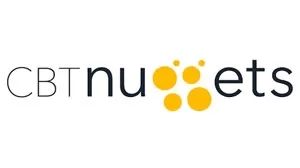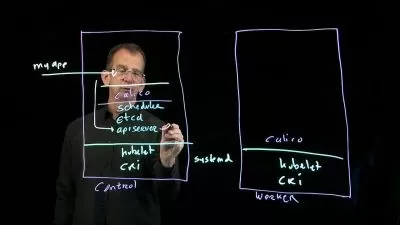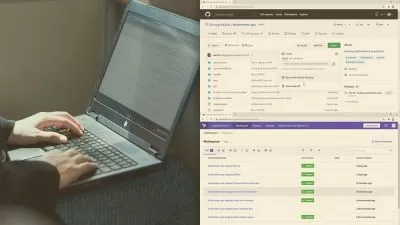CKA Online Training
Trevor Sullivan
16:22:08
Description
This intermediate-level Kubernetes training covers the objectives in the CKA exam, which is the one required exam to earn the Certified Kubernetes Administrator (CKA) certification.
If you already know a thing or two about Kubernetes, you’ll understand that it’s a portable, extensible, open-source platform for managing containerized workloads and services, facilitating both declarative configuration and automation. But if that explanation leaves you more confused than helped, Kubernetes lets you wrap up an application so that no matter where it goes or what software/hardware configurations it runs on, it always behaves the same way. This Certified Kubernetes Administrator (CKA) training provides administrators with the skills and knowledge needed to install, configure and manage Kubernetes containers so that your application life cycle stays on an even, reliable keel.
More details
For anyone who leads a technology team that uses Linux Foundation products, this CKA training can be used for CKA exam prep, on-boarding new systems administrators, or as part of a team training plan.
CKA: What You Need to Know
For any systems administrator using this training for exam preparation, our Certified Kubernetes Administrator (CKA) course maps to the Linux Foundation CKA exam objectives, and covers topics such as:
- Managing deployments and configuring applications
- Installing, configuring and validating Kubernetes clusters
- Navigating Kubernetes cluster architectures
- Configuring cluster nodes and networking
- Managing schedulers and scheduler events
- Configuring network security policies, authentication and authorization
- Implementing cluster maintenance
- Logging and monitoring
- Configuring Kubernetes storage and objects
- Troubleshooting application, control plane, worker node and networking failures
Who Should Take CKA Training?
This CKA training is considered administrator-level Linux Foundation training, which means it was designed for systems administrators. This Kubernetes skills course is valuable for new IT professionals with at least a year of experience with orchestration infrastructure and experienced systems administrators looking to validate their Linux Foundation skills.
New or aspiring systems administrators. There was a time when familiarity with managing, deploying and troubleshooting Kubernetes clusters was optional, but that time has passed. For new systems administrators, although certifying as a Certified Kubernetes Administrator isn’t an immediate necessity, you should learn everything you can about the containerization platform -- it’s almost certain you’ll encounter virtualization and containerization in your career as a sysadmin, prepare for it with this training.
Experienced systems administrators. If you’re already comfortable with the Kubernetes command line, and feel confident in your ability to perform application lifecycle management, troubleshooting and cluster maintenance, the Certified Kubernetes Administrator certification may well be in your reach. But if you’re looking to confirm that there’s no part of installation, configuration, validation, security or troubleshooting of a Kubernetes cluster before you take the exam, take this CKA training.
User Reviews
Rating
Trevor Sullivan
Instructor's CoursesI enjoy teaching IT because the technology industry is changing so rapidly, and our learners need to stay at the cutting edge.
Trevor started building and troubleshooting computers at a young age, thanks to his father owning a software business. He brings more than a decade of IT and training experience to CBT Nuggets. Prior to joining the team, he worked in pre-sales engineering and solutions architecture. Trevor’s hobbies include riding motorcycles, hiking, and spending time with his family.
Certifications: AWS Certified Cloud Practitioner, AWS Certified Solutions Architect - Associate, AWS Certified Developer Associate, AWS Certified SysOps Administrator Associate, AWS Certified DevOps Engineer Professional, AWS Certified Solution Architect - Professional, AWS Certified Security Specialist, Certified Kubernetes Administrator (CKA), and Certified Kubernetes Application Developer (CKAD)
Areas of expertise: AWS, Azure, MySQL, GitHub, Docker, Kubernetes, and PowerShell automation

CBT Nuggets
View courses CBT Nuggets- language english
- Training sessions 88
- duration 16:22:08
- Release Date 2023/07/21















